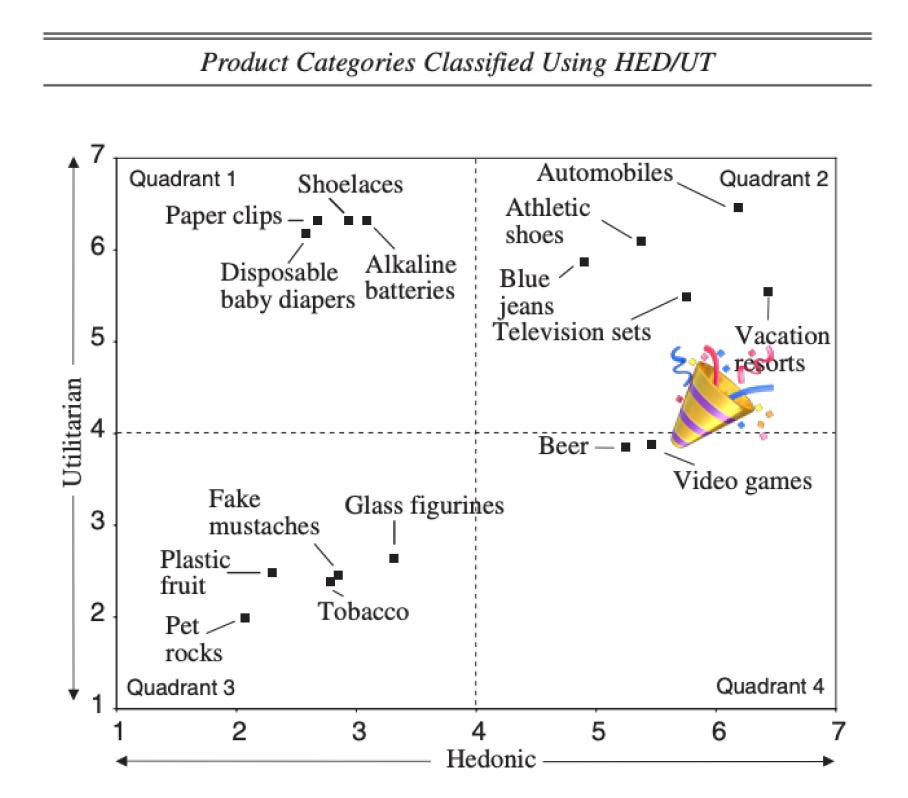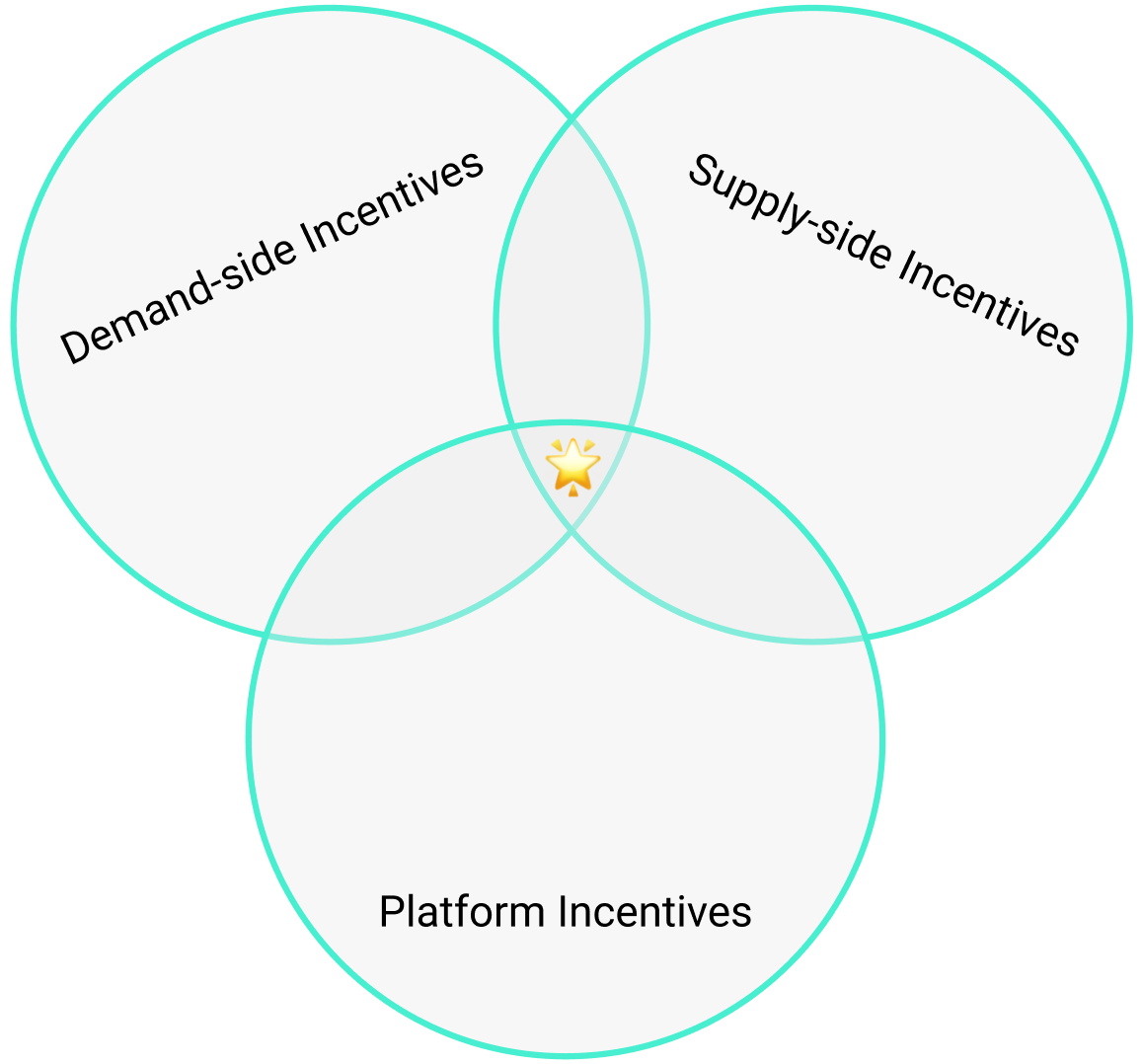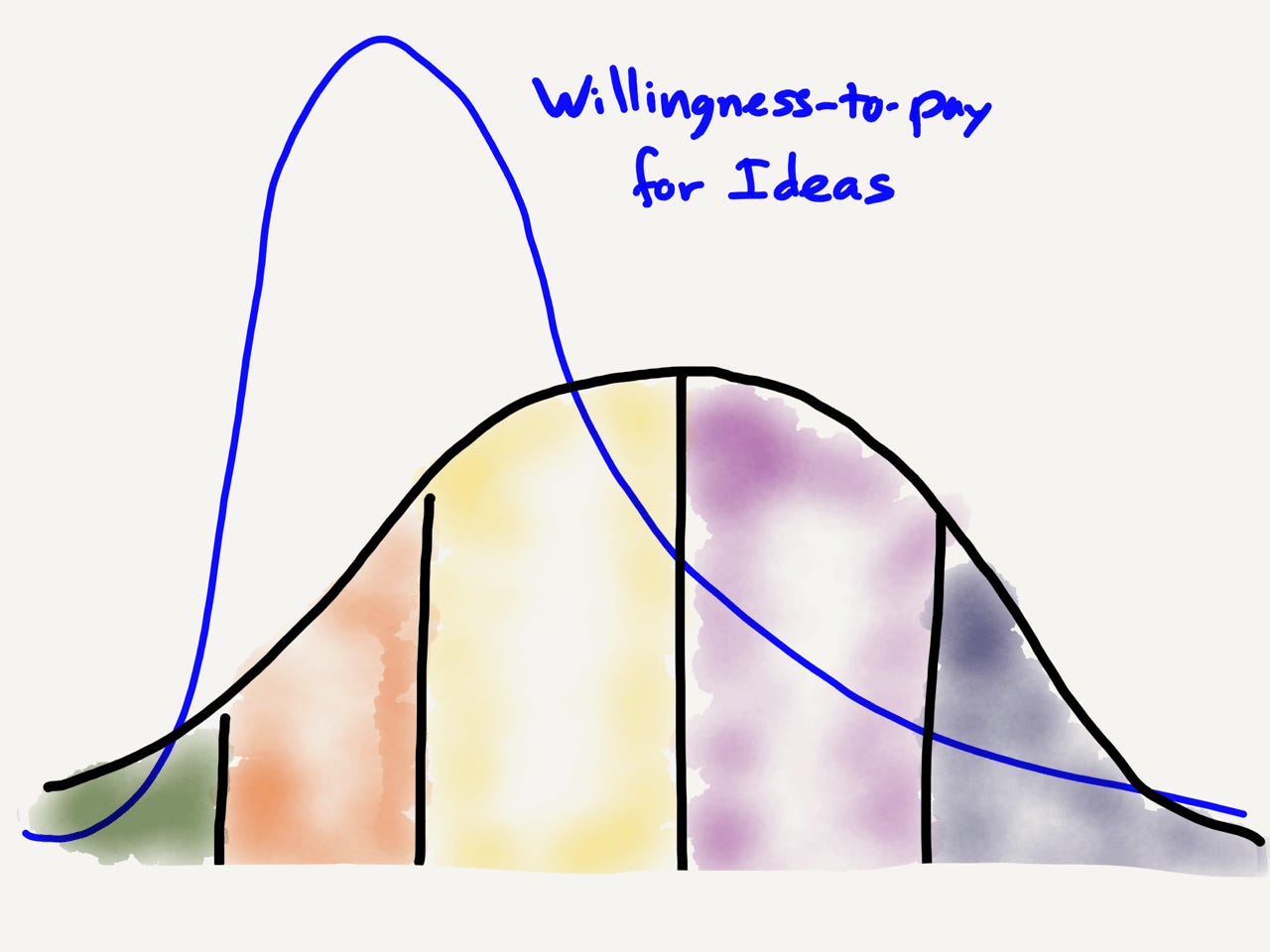In this piece, we break down our observations of how consumer platforms incentivize participation, where they go wrong and some principles we’ve been keeping in mind as we think about designing incentives.
consumer platforms = catharsis as a service
the “hipster incentive” is powerful
starting with money as the incentive is wrong
paying the creator >> paying for their content

from Prof - Squad Goals
The status quo: bad incentive design is dangerous
There’s no denying that incentives shape peoples’ actions. And peoples’ actions dictate outcomes. At the outset, it’s important to clarify that there is no perfect set of incentives. However, there are better and worse ones.
If you want to harness the power of YOUR crowd, the most important thing you’ll need to do is to make sure your mission and that of your contributors is totally in sync. -Reid Hoffman
The main reason for the harm today’s internet platforms cause is the misalignment in incentives between users, creators & the platforms — or demand, supply and platform incentives. And a lot of it comes down to advertising-based business models.
YouTube, Facebook, Twitter, TikTok — and other ads-backed platforms — define north star metrics around maximizing the time we spend within the bounds of their walled gardens. The platforms’ incentives hinge on the need for as many eyeballs as possible on ads. Hence, their algorithms sift through to assign a higher weighting on content that captures more of users’ time. Creators are paid dividends (in engagement, as well as $) based on that; incentivizing the creation of content that is optimized around attention, not user value.
Creators find a multitude of ways to grab more attention and try to game algorithms — from clickbait to completely changing the content they make to fit platform protocols. For example, listen to new songs you hear on streaming services: how many start with a loud chorus to grab your attention? And how many companies churn shitty blog posts with lots of keywords just to help them rank online? Heck, SEO agencies and social media consultancies are built around helping people in the war for attention. We’ve seen many of these platforms try to maneuver and patch on fixes. For example, YouTube deprioritizes videos that include clickbaity titles. But you can’t put a Band-Aid on a bullet wound- the fundamentals are wrong. The incentives created a power dynamic where users are at the lowest rung. But through these experiences, we’re learning why incentive design is so important.
“The disciplines that we were lacking in the company in the early days, that I wish we would have understood and hired for,” he said, were “a game theorist to just really understand the ramifications of tiny decisions that we make, such as what happens with retweet versus retweet with comment and what happens when you put a count next to a like button?” -Jack Dorsey of Twitter
Some principles: humans don't change
When discussing incentives, we should frame our thinking around what our goals as humans are - because those don’t change. Humans care about personal fulfillment, status and money. And the order matters.
1. consumer platforms = catharsis as a service
Creative output and human connection are cathartic. Opening oneself up to feelings of tenderness and self-recognition permits us to connect more deeply with others. Most of the content platforms or social apps offer strong consummatory affective (hedonic) gratification - i.e. we use them for bursts of pleasure.
However, today’s platforms abuse human psychology by manufacturing experiences that use variable reward schedules, where rewards are delivered intermittently and randomly, with the intention of maximizing users’ response rate. A dangerous social-validation feedback loop. This formula has proven to be extremely effective when optimizing for time spent on platforms. So successful that it has become an addiction - lighting up the same receptors in our brains as a gambler playing a slot machine.
It is vital that we build platforms that enable degrees of self-expression and self-protection, but we must place guardrails to ensure we’re encouraging positive behaviors.
The internet phenomenon that is Wikipedia does not use “straightforward rewards” as the basis of its incentive system. Millions of people contribute to the online encyclopedia, but aren’t incentivized to do so through explicit reinforcement. While many people make initial contributions for pleasure, they are more often motivated by an “internal drive to feel efficacious and self-confident”. Wikipedians establish credibility for themselves in indirect ways - by participating in multiple channels of discourse, claiming ownership of articles on their own user pages, holding administrative power as socially-agreed upon leaders and collaborating with other contributors on the platform. Contributors and editors actively refer to themselves as “Wikipedians”, meaning they identify as a “we” or “us”. This is vital for community building. In the open, peer-produced model, users tend to be goal-directed and invest time and effort into their contributions in order to be accepted into the community and generate status for themselves.
Although this incentive system is effective for those willing to put in the work, Wikipedia remains prominently written by only 1% of its contributors and similar to most content platforms, a majority of users spend their time as “lurkers” or “free riders.” This crucial conversion from “passive” to “active” comes down to the fulfillment of our needs, both hedonic and utilitarian.

2. the “hipster incentive” is powerful
One of the biggest motivators we observe is the power of subcultural capital - or what we call the “hipster incentive”. It’s an important interpretation of Bordieau’s work on the value of cultural capital in defining our position within society -- the hipster incentive is grounded in our need for status or social capital.
Subcultural capital consists of the knowledge of the scene, possession of relevant objects, appearance through style, and perceived commitment or longevity of identification with the scene (Thornton 1995; Force, 2009).
This is especially true among young people who are “social capital poor” and look for ways to seek out the most efficient path to generate social capital (s/o Eugene Wei). We’re in a constant battle to find our own sense of identity within the overarching internal values of the scene we want to belong to, and on that journey we’re incentivized to continuously prove our allegiance (“fanship”) and how we’re ‘in the know’.
We believe that features that recognize the hipster incentive & materialize earned subcultural capital are undervalued.
3. starting with money as the incentive is wrong
How many successful YouTubers started out because their incentive was to make millions of dollars? None. And maybe that’s because it takes you an average of 3873 videos to hit 1 million subscribers…
With the ongoing shift towards Web3, and specifically the move from institution to individual and the rise of decentralized finance, we’re seeing a rising number of emergent platforms that rely on social tokens or non-fungible tokens (NFTs).
However, these efforts have been marred by a number of blockers. The wonderful Sari Azout & Packy McCormick put it quite bluntly:
As much as crypto fans want to believe they’ve created something startling and revolutionary, in reality, the experience feels: unfamiliar (payments happen off-platform), overwhelming (you end up in a confusing maze of wallets), and pyramid scheme-y.
Part of the issue is the strong focus on distributing financial reward in exchange for participation. It’s a well established belief that reliance on extrinsic motivators, especially financial ones, are not enough. User's intrinsic motivation, and, specifically, perceived enjoyment, is a more explanatory variable of continued use. This is especially the case for products that offer catharsis as a service.
In a great post about an experimental tokenized community, Richard Kim reflects:
Whether they acknowledge it or not, tokenized communities are so focused on token price that they lose sight of why they were created to begin with--the shared values and interests, the intrinsic motivators, the glue that is left when all other bindings are stripped away.
4. paying the creator >> paying for their content
Should you implement a model that enables users to pay the creator or to pay for their content? In most cases we’ve seen, paying for the creator is more effective.
It comes down to the tension between the financial pain of parting with money (“is this a fair amount to pay?”) and the decision pain of whether to pay in the first place (“do I care enough to pay?”). As the amount of money one must pay goes down, the decision pain dominates the equation.
Why then is the decision to invest in an individual easier? It’s because you’re paying for access to them and their ideas. Ben Thompson writes about how “the chasm of ideas is also a chasm of monetization” and plotted the Idea Adoption Curve against a “Willingness-to-Pay Curve”:
I recently spoke with Matthew of Cent.co. Cent is an impressive platform that has been experimenting with the fascinating concept of seeding a person.
Seeding allows users who post to earn money directly from their fans, but it's also a powerful way for content consumers to earn from the (or at least get a discount on the) monetary support they give creators.
The most interesting part of Cent’s iterations was the move from seeding posts to seeding creators. We’d highly recommend reading through their decision to do this, but in short, seeding posts “didn’t make enough people enough money enough of the time”. However, it did succeed in developing a “recursive incentive design that encouraged people to discover "undervalued" work and financially back it, thereby giving them the incentive to spread the word about that work”.
Thank you for reading! Please leave a comment and let us know if there are any other considerations or examples of interesting incentive design. And consider sharing with someone who’ll find this useful or interesting:
- Jad Esber & Jennie Silber with thanks to Matthew, Sari Azout & Leora Kornfeld





